Introduction
Credit: Save the Children / Hanna Adcock
Achieving gender equality in education participation, in the teaching and learning process and in access to socialand economic opportunities that education can facilitate are key interlinked ambitions in two of the SustainableDevelopment Goals (SDGs) in the 2030 Agenda for Sustainable Development: SDG 4 on education and SDG 5 ongender equality. These aims are also key to the Education 2030 Framework for Action, which calls on countriesto adopt strategies that not only cover access to education for all but also address substantive gender equalityissues: ‘supporting gender-sensitive policies, planning and learning environments; mainstreaming gender issues inteacher training and curricula; and eliminating gender-based discrimination and violence in schools’.
The 2019 Gender Report is based on a monitoring framework first introduced in the 2016 Global EducationMonitoring Report. In addition to focusing on gender parity in education participation, attainment and learningachievement, the framework examines broad social and economic contexts (gender norms and institutions) andkey education system characteristics (laws and policies, teaching and learning practices, learning environments,and resources). The framework also looks at the relationship between education and selected social andeconomic outcomes. For instance, a move towards parity in education attainment may increase women’s labourforce participation rates, but low levels of labour force participation feed into existing norms and may constrainexpansion of education opportunities for women (Figure 1).
Figure 1


